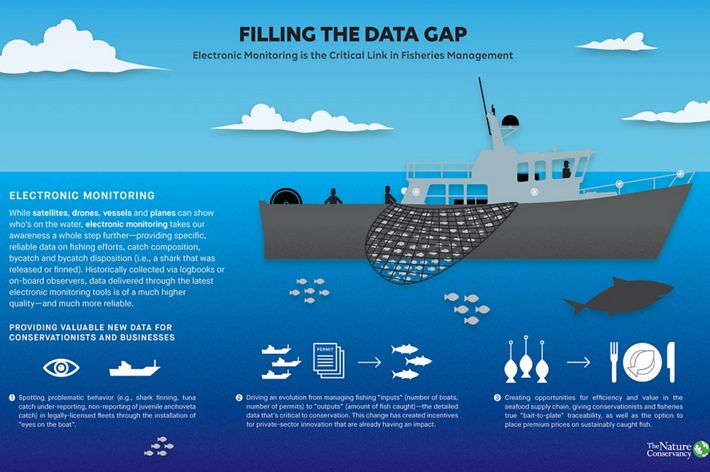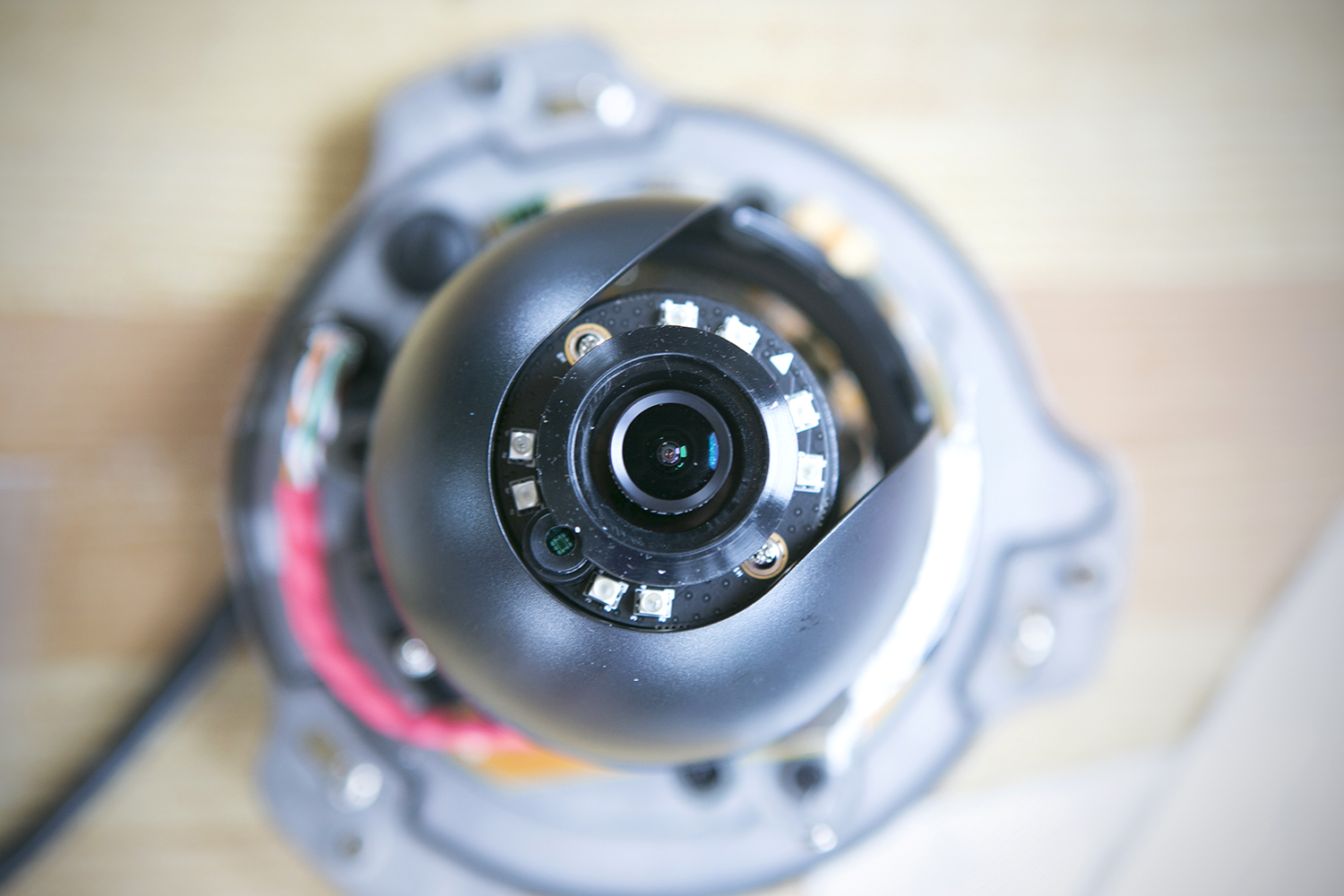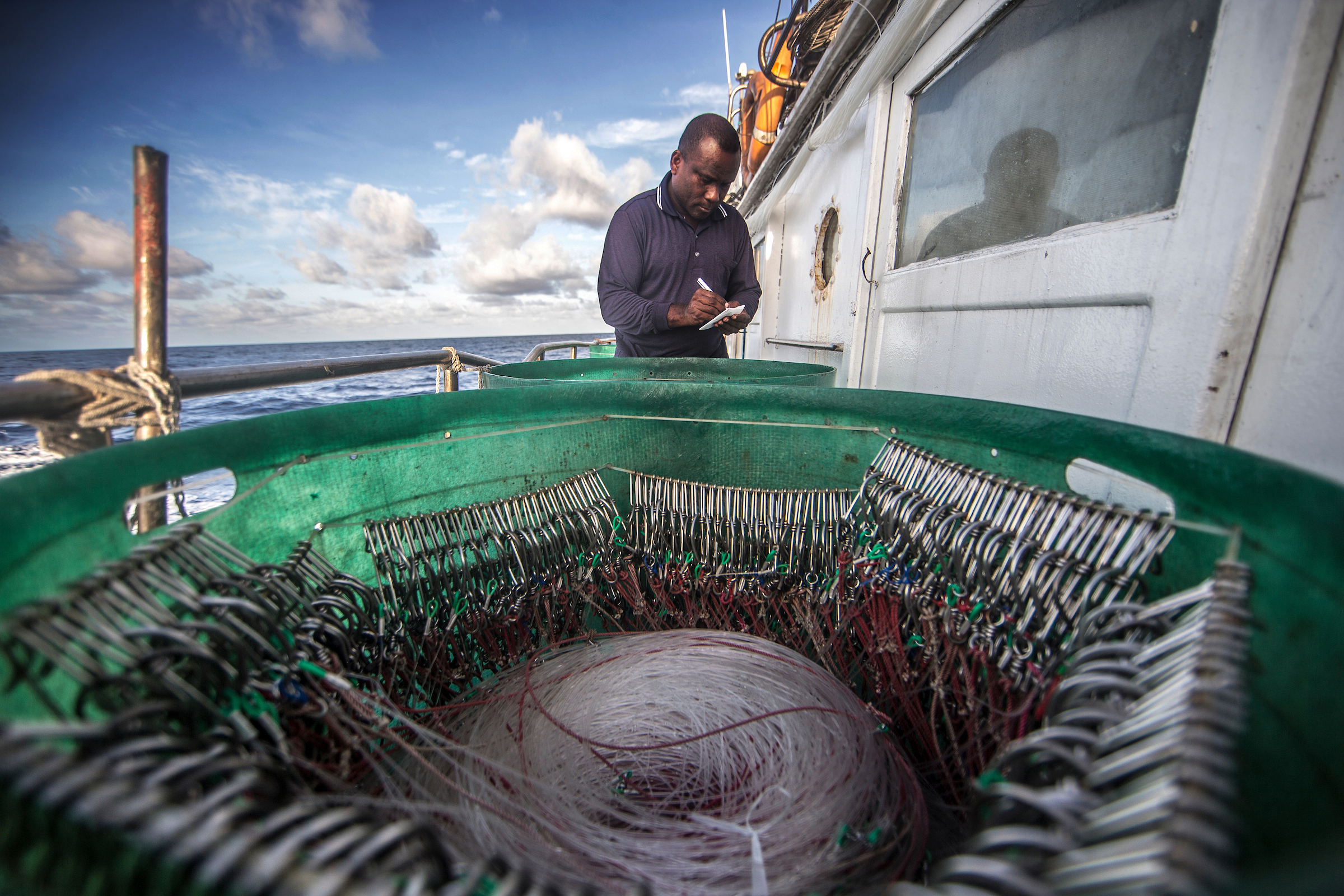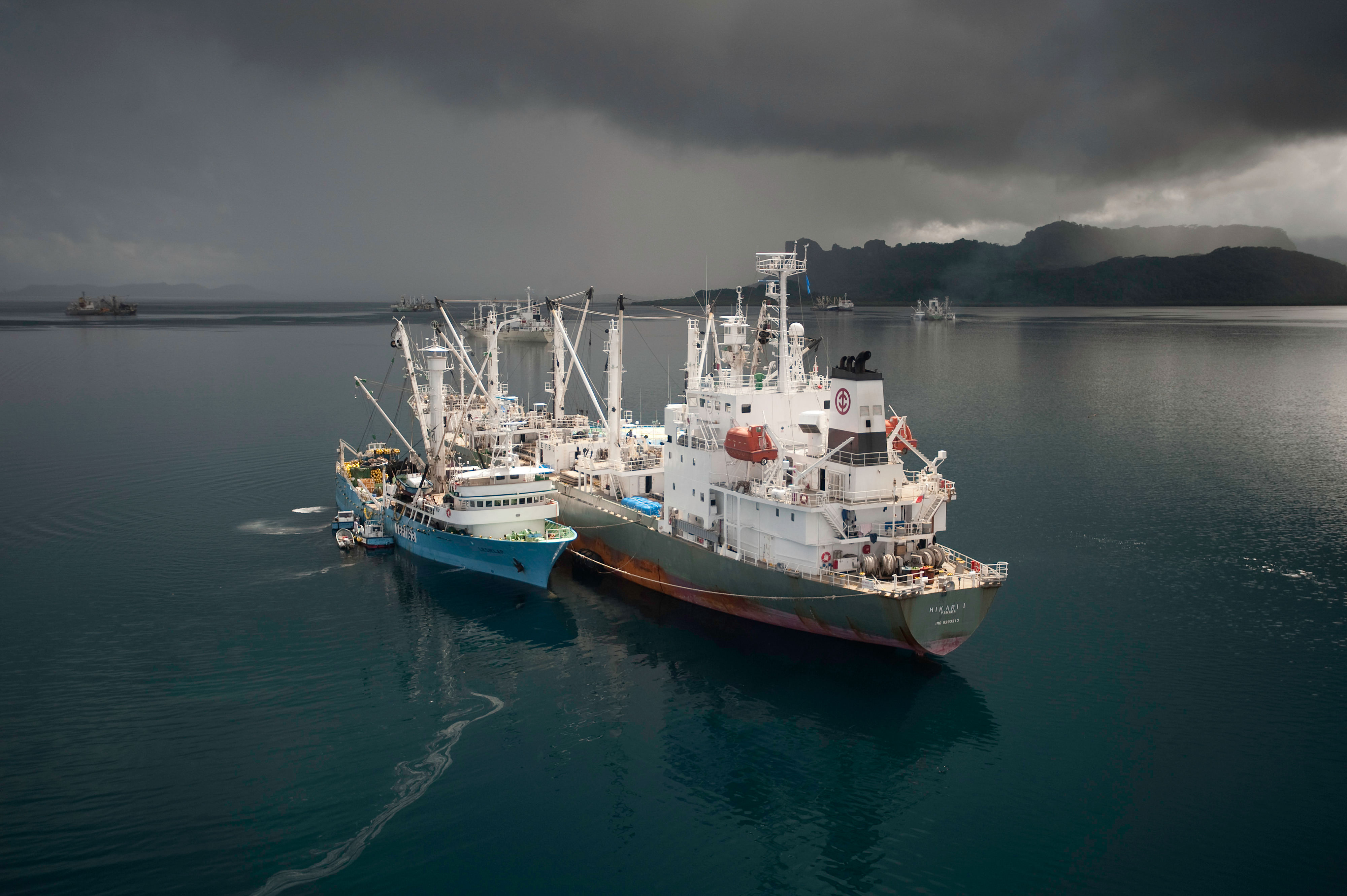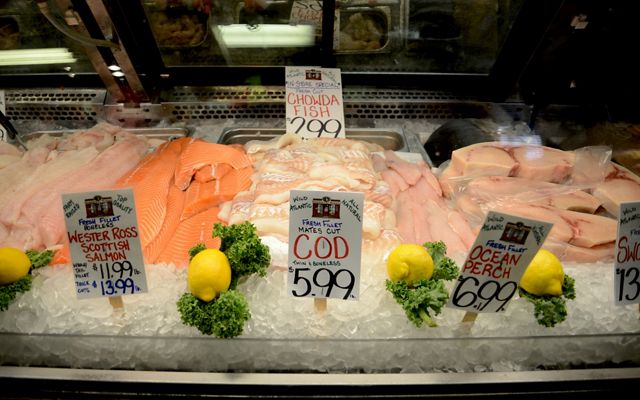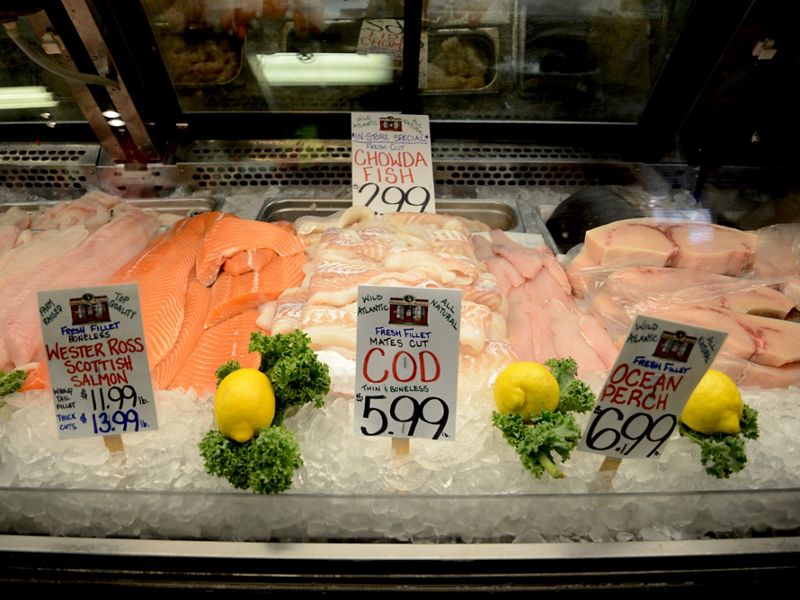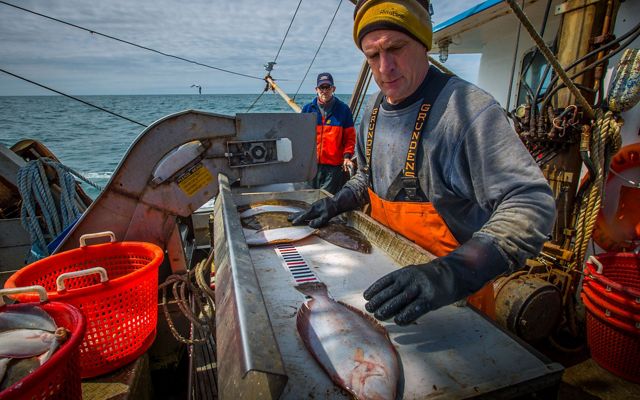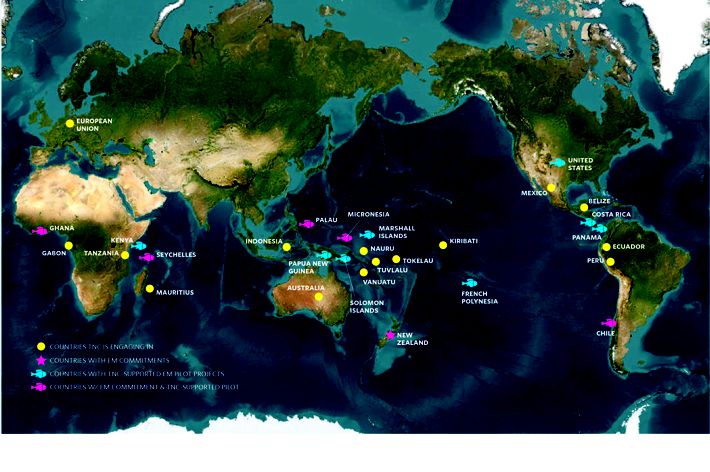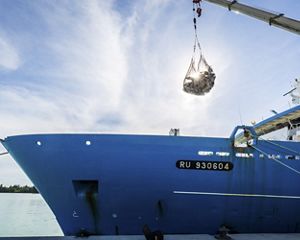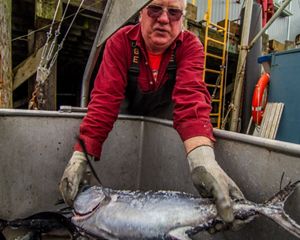Fishing for Better Data
Using electronic monitoring to improve fisheries transparency and enhance ecological and socioeconomic resilience across large-scale fisheries

This Just In:
Pacific Island Tuna Distributes $100,000 to Marshall Islands to Support Conservation
TNC partnered with the Republic of the Marshall Islands, one of the world’s largest tuna fisheries, to establish Pacific Island Tuna, a sustainable seafood supplier that sources its catch from vessels with 100% monitoring and improved transparency. As designed, the first distribution of $100,000 from Pacific Island Tuna company was distributed to the Republic of the Marshall Islands in June to support conservation programs on Arno Atoll.
Dive into the Numbers
-
3.3
Billion people rely on seafood as a major source of protein
-
2/3
Global fisheriess are either overfished or nearing irreversible damage
-
$250
The global seafood market value was over $250 billion USD in 2022 and is expected to reach nearly $350 billion USD by 2027
-
6
Countries have made commitments to 100% monitoring in their large-scale fisheries
Overview
Large-scale fishing occurs on more than half of the ocean’s surface—more than three times the area covered by land-based agriculture. Vessels in these fisheries are often fishing for highly commercialized species like tuna and shrimp. Large-scale fishing provides seafood that one in seven people around the world rely on for protein and supports millions of livelihoods.
In most fisheries around the world, fishers are required to report their catch to government or supply chain entities, but this self-reporting is often unverifiable. This reality creates the conditions for many legally licensed fishing vessels to conduct widespread illegal, unreported, and unregulated (IUU) fishing activities such as misreporting and underreporting of the number and type of species caught; shark finning; and retention of endangered, threatened, and protected species. A deadly feedback loop has emerged between fishers, supply chain stakeholders, and governments that perpetuates illegal and unsustainable activities that directly threaten the health of our oceans and communities. Without accurate and timely data on fishing activity, we cannot responsibly manage our global fisheries.
To solve this issue, The Nature Conservancy (TNC) is invested in Electronic Monitoring (EM)—the use of on-board video cameras, sensors, and GPS—to improve fisheries transparency and transform large-scale fisheries across the globe.
What Is Electronic Monitoring (EM)?
EM is a proven tool that illuminates dark spots in fisheries and fills critical data gaps that impede transparency, enforcement, and science-based fisheries management. EM provides detailed data on fishing efforts, catch composition, bycatch of non-target species (i.e., sharks and sea turtles) and adherence to environmental and social commitments while at sea. EM also drives consumer confidence that seafood products have been harvested legally, sustainably and without labor abuses.
Since 2015, TNC has been working across geographies to engage with fishery, government, and industry stakeholders to support improved fisheries transparency and advance EM uptake. Now, we have created a groundswell of EM momentum and are working around the world to develop innovative solutions to make EM more reliable, functional, and affordable.
Our Strategy
TNC has created a groundswell of EM momentum. To meet this moment, we need to combine transformative EM technology improvements with innovative market and policy partnerships.
Technology
Today, most EM programs manually remove hard drives from vessels when they return to port, where they are subsequently transported to data centers for human review. This is difficult to coordinate at scale, exorbitantly expensive (data review can account for as much as 60% of annualized program costs) and it is often ineffective given the time delay between the fishing event and the data availability. These factors can degrade the value of EM data and prevent critical interventions that would otherwise protect marine species and keep IUU seafood products out of the seafood supply chain. TNC is leading innovative solutions to address these issues and accelerate the successful adoption of EM globally:
-
Building a Global Electronic Monitoring Data Platform
Develop a tool to facilitate the transfer, storage, governance, and reporting of EM data in one easy-to-use cloud-based platform that can operate across geographies and EM programs.
-
Integrating Machine Learning/Artificial Intelligence into EM Systems
Reduce costs and provide near-real-time information to industry and government stakeholders on the legality and sustainability of a vessel’s catch before products enter global supply chains.


On-the-Water
TNC is working to develop EM leadership for country government and industry partners across several geographies. These fisheries are selected based on their ability to bear the early transaction costs of scaling EM and test new EM applications. So far, we have supported pilot projects in over 18 different geographies. To build on this work, we are continuing to support on-the-water implementation in new geographies and through new use cases for EM by:
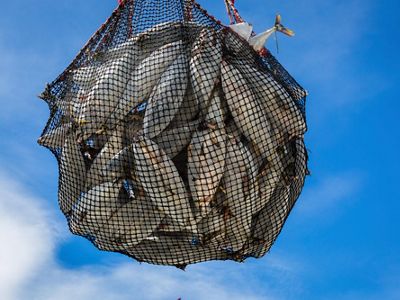
Demonstrating the value of EM in partnership with industry and government.
Build on foundational work to pilot and inform EM program design and implementation to cultivate buy-in from public- and private-sector actors to commit to EM.
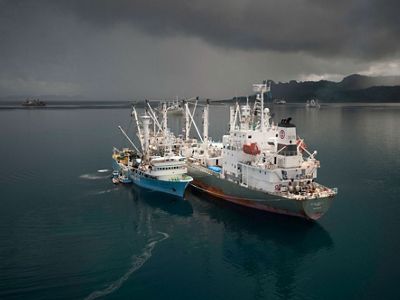
Improving EM for transshipment monitoring and verification.
TNC has tested and proven that EM can be a critical tool for verifying and monitoring transshipment activities (when an offload of a product or crew member changes from one vessel to another while still out at sea). We will scale this body of work to provide more incentive for fisheries authorities to adopt EM.

Using EM to support human rights safeguards.
Develop parameters for how EM can be used as a tool to eliminate human rights abuses at sea.
Markets
Improving technology and data analytics is imperative for EM to operate at scale, but to create transformational change we need to catalyze market leadership. TNC has secured partnerships with all major US tuna brand suppliers, with participation from major retailers like Walmart. Increasing market commitments has the potential to incentivize political reform and create economic advantages for early market adopters, especially as consumers are made more aware of these unsustainable fishing practices and their ecological and socio-economic impacts. TNC is accelerating market leadership from major global seafood suppliers and retailers by:
1. Driving 100% monitoring commitments from key seafood stakeholders.
2. Deepening market engagement across the supply chain.
TNC is no stranger to this work and is seeking to find and utilize innovative strategies for accelerating this work. TNC is now adapting Pacific Island Tuna, a joint venture between TNC and the Republic of the Marshall Islands that is disrupting the $50 billion/year global tuna market to align supply chain incentives around delivering legal, sustainable seafood products to market that enhance supply chain resilience.
Policy
We have learned firsthand that getting the policy details right matters. In partnership with fisheries management authorities and multilateral institutions, TNC is prioritizing engagement at all levels to drive the adoption of streamlined policies that catalyze EM uptake and ensure EM programs deliver tangible conservation outcomes. We will do this by providing technical support to countries and regional bodies on the development of fisheries transparency laws and regulations and by demonstrating EM’s ability to fill data gaps to understand the health of target fish stocks and the fisheries’ impact on endangered and threatened species. TNC will drive coordination and collaboration to advance EM policy uptake by:
-
Driving 100% monitoring commitments from fisheries management authorities
We will engage with our government partners, new and old, to advance EM program design and implementation that can help countries reach their commitment objectives.
-
Streamlining policy development
To enable greater EM policy uptake, TNC is creating a policy toolkit that provides targeted technical EM support and guidance.
-
Hosting workshops for communities in critical geographies
These workshops will foster an informal network where leading EM geographies can learn from one another, reinforce local policy gains, and highlight areas of collaboration for international policy development in key seafood-supplying nations.
Places We Work
TNC is engaging in more than 25 countries and has supported over 10 EM pilot projects. This work has fostered major EM interest and commitments across several of these geographies including 100% electronic monitoring commitments in: Chile, Federated States of Micronesia, Ghana, New Zealand, Palau, and Seychelles.
Dive Deeper into EM
-
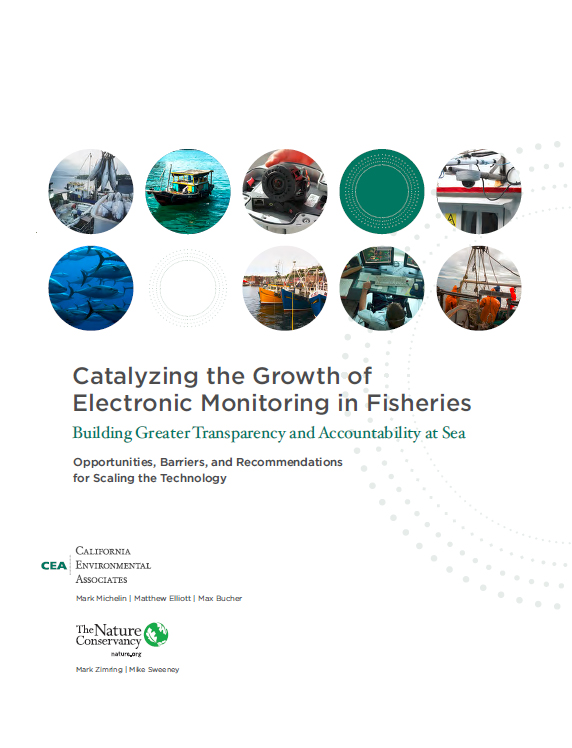
The Nature Conservancy's 70-page paper provides detail and input from more than 40 electronic monitoring experts.
Download -
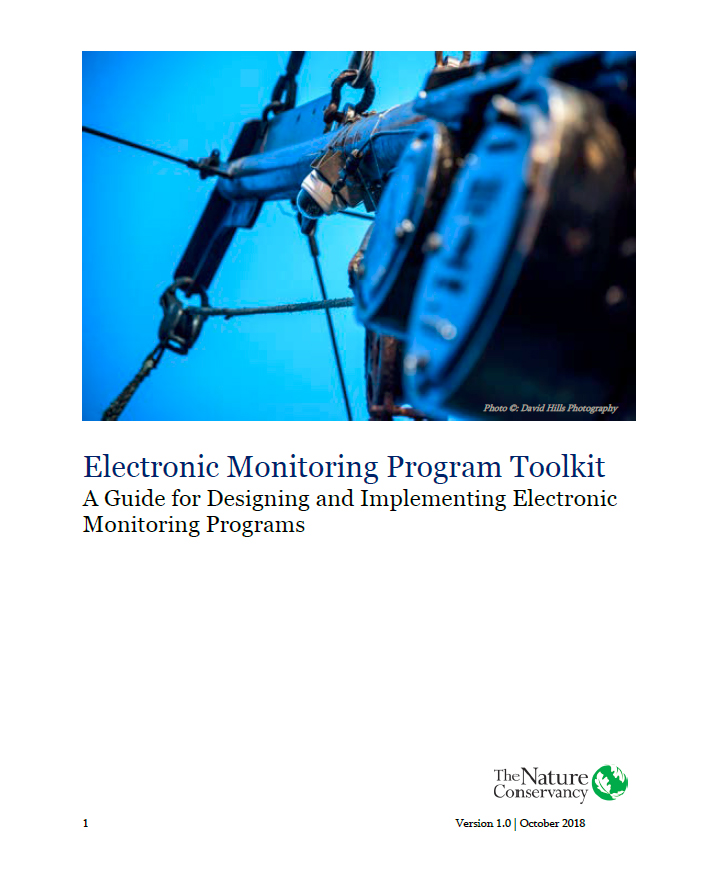
Electronic Monitoring Toolkit
Produced by The Conservancy and partners, this is an overview of questions and issues that may arise when governmental bodies and fishery managers are considering the development and implementation of electronic monitoring programs for fisheries.
Download
